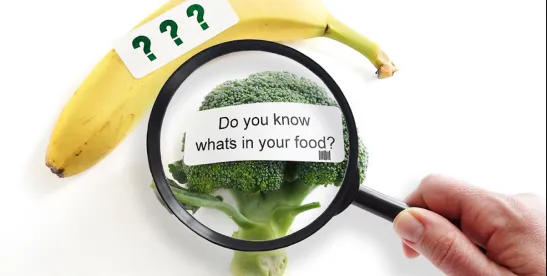In August 2024, China issued the draft voluntary national standard of front-of-pack (FOP) nutrition labeling for public comment, namely, Guidelines on Graphic Symbol of Front-of-Pack Nutrition Labeling for Prepackaged Food (“draft guidelines”)[1]. Comments on the draft guidelines will be accepted until October 4, 2024.
Nutrition labeling (often on the back panel of the package) is mandatory for prepackaged foods in China. FOP nutrition labeling (FOPNL) remains voluntary but is encouraged by the Chinese government. Some food companies have already elected to voluntarily declare FOP nutrition labeling in China in alignment with their global practices. The draft guidelines, therefore, would provide a uniform approach for companies when developing FOP nutrition labeling specific to the Chinese market. There are four types of FOPNL prescribed by the draft guidelines suitable for different types of foods, and one product may only use one type of FOPNL listed below.
1) FOPNL – Warning label
A warning label only applies to foods sold to children aged 36 months to under 15 years old, excluding cheese and processed cheese. Prescribed warning logos should be used if the fat, sugar, or sodium content exceeds the respective threshold established in the draft guidelines, e.g., a sold food containing sugar at a level above 23g/100g (see an example below). It is important to note that foods bearing such warning logos must not be marketed to children.

2) FOPNL – Rating label
A rating label applies to all prepackaged foods directly distributed to consumers (except for cheese and processed cheese). Foods are classified into four Grades – A, B, C, and D, which are determined by the lowest individual Grade among its fat, sugar, and sodium contents. Grade A refers to the highest Grade (i.e., with the lowest fat, sugar, and sodium content), whereas Grade D represents the lowest Grade (i.e., with the highest fat, sugar, and sodium content). Corresponding thresholds of fat, sugar, and sodium for solid and liquid foods are defined in the draft guidelines. The following is an example of a rating label – with the assigned statement “nutrition choice” on the top:

3) FOPNL – Encouragement label
An encouragement label can be used only for the designated ten food categories, e.g., cereal products, milk and dairy products, nuts and seeds, meat products, aquatic products, egg products, fruit and vegetable products, and beverages. Appendix A of the draft guidelines provides the definitions of these food categories and corresponding criteria (e.g., thresholds of fat, sugar, sodium, and saturated fat) to qualify the use of the encouragement label. For instance, a qualified solid beverage product must contain no more than 10g fat, 30g sugar, and 250mg sodium per 100g. The logo assigned to the encouragement label is shown below (as an example) with the statement “smart choice” in a larger font size on the top and another statement, “attention to fat, salt and sugar,” in a smaller font size at the bottom right.

4) FOPNL – Informative label
Similar to the rating label, an informative label applies to all prepackaged foods directly distributed to consumers, as well. Graphic symbols (see example shown below) are used to declare the content of fat, sugar, and sodium either per 100g/ml or per serving on the front package along with their percentage of the Chinese Nutrient Reference Value (NRV%). Thresholds of fat, sugar, and sodium for solid and liquid foods are provided in the draft guidelines for one to determine the specific values for declaration. For instance, if the sodium level in a solid food is above 800mg/100g, the cylinder box in the illustrative example below should be printed in the color red to alert consumers.

The introduction of the draft guidelines of FOPNL echoes China’s long-term policy Healthy China 2030, which promotes FOP nutrition labeling and calls for campaigns on reducing intake of sugar, fat, and sodium from food. Prior to the draft guidelines, China proposed to allow the use of voluntary FOP nutrition labeling (as a supplementary mean) in the revised food nutrition labeling standard (GB28050-xxxx, not yet finalized as of August 2024).
It is worth noting that the Chinese food industry has been active in taking steps to advocate for the adoption of FOP nutrition labeling. For instance, the Chinese Nutrition Society issued the Norms of Healthy Choice Labeling for Pre-packaged Foods[2] in 2017, which specifies technical requirements for the use of the “Healthy Choice” logo. Also, the China National Food Industry Association published a group standard on FOP nutrition labeling in 2018, namely Guidelines for Iconic Nutrition Labeling for Pre-packaged Foods (T/CNFIA 002-2018)[3]. These industry initiatives help raise awareness and provide additional guidance on FOPNL in China. As noted above, while FOPNL is voluntary at this stage, given the policy push from the central government towards Healthy China, it is likely that it may become mandatory in the future, depending upon the assessment of how FOPNL is carried out during its implementation phase.
[1] https://std.samr.gov.cn/gb/search/gbDetailed?id=02DDAC68065BAD4CE06397BE0A0A1546
[2] http://health.people.com.cn/GB/n1/2017/1101/c14739-29620925.html








 />i
/>i
